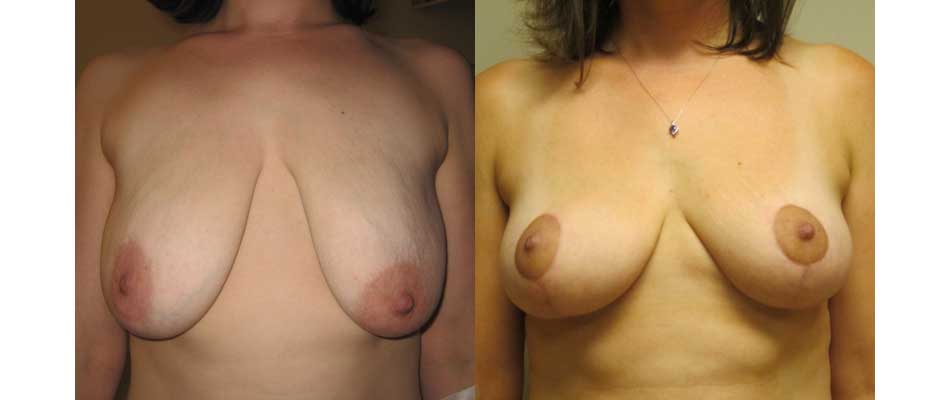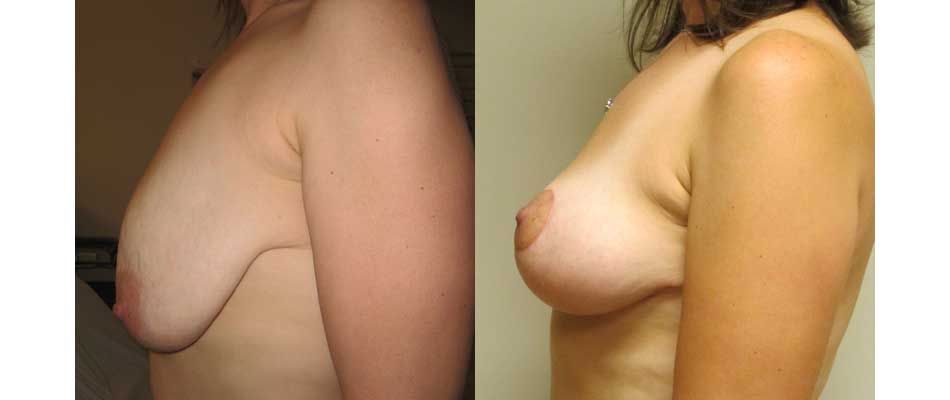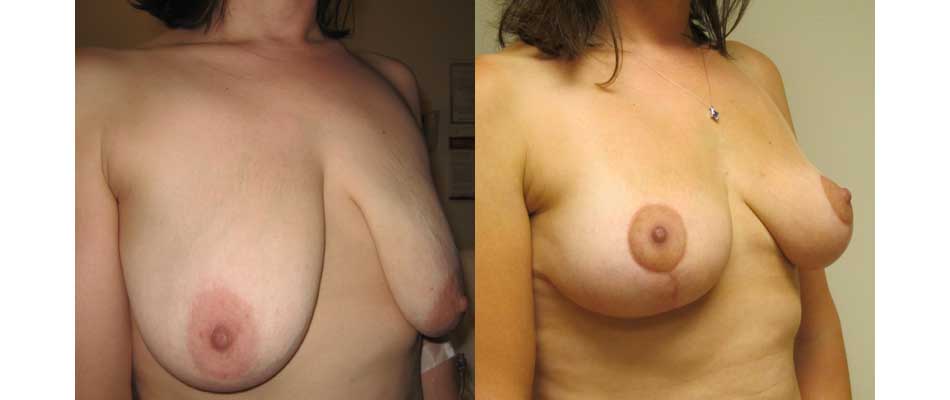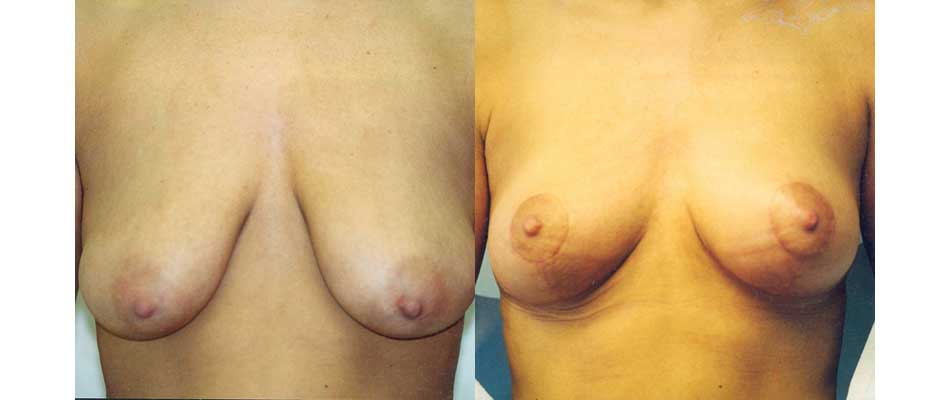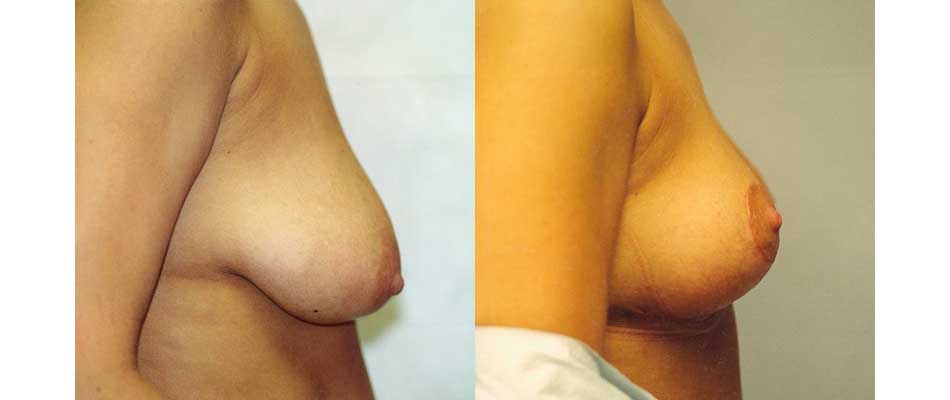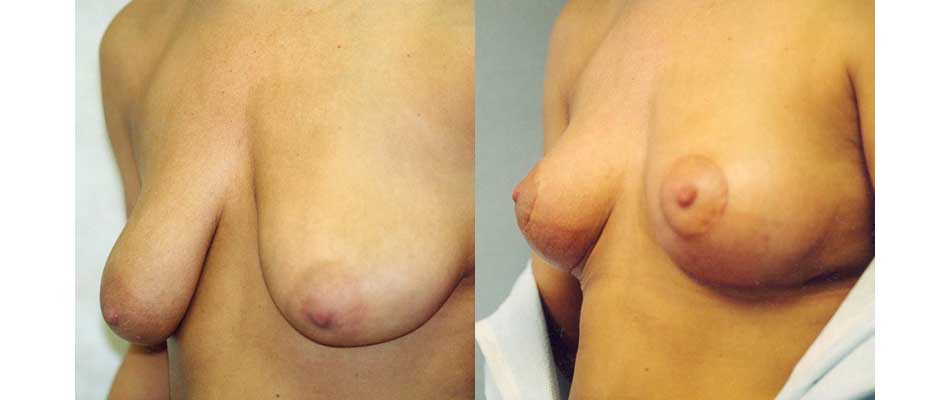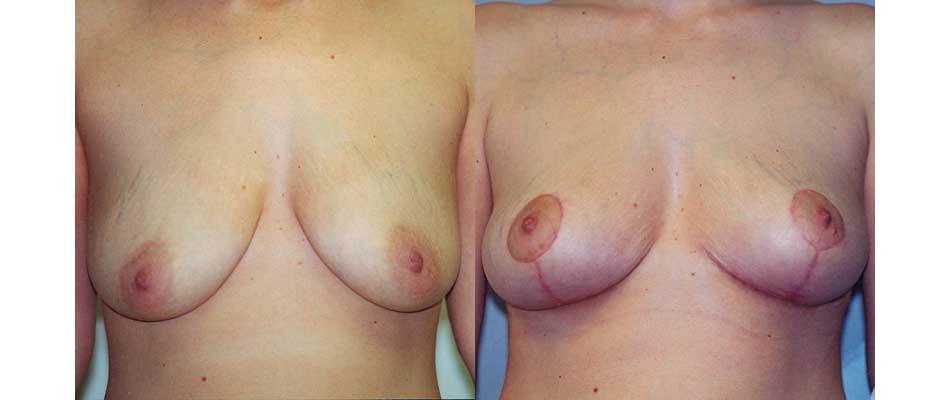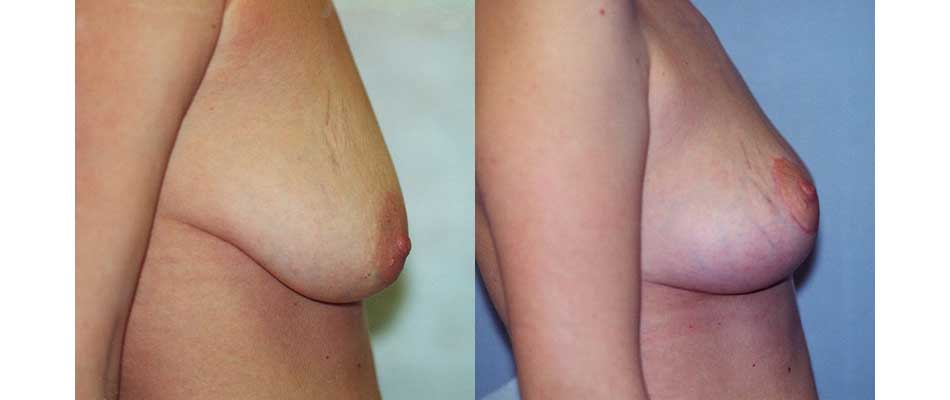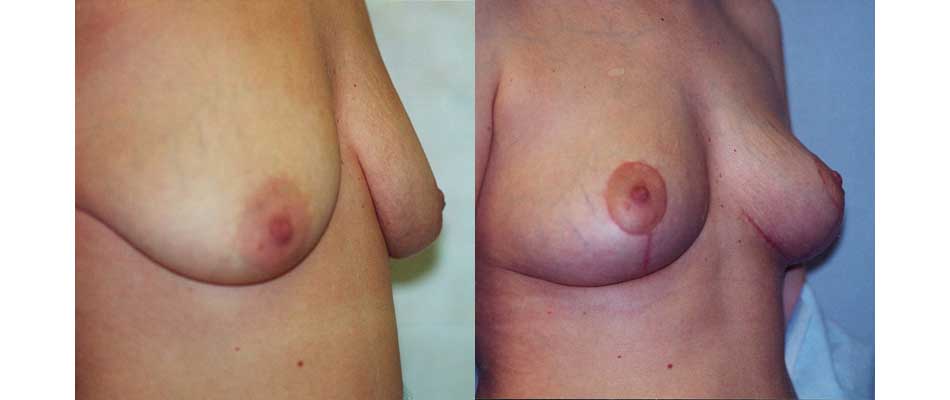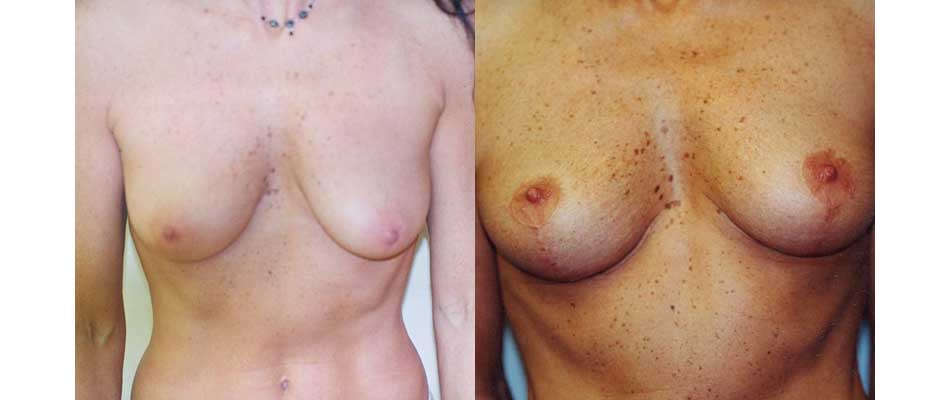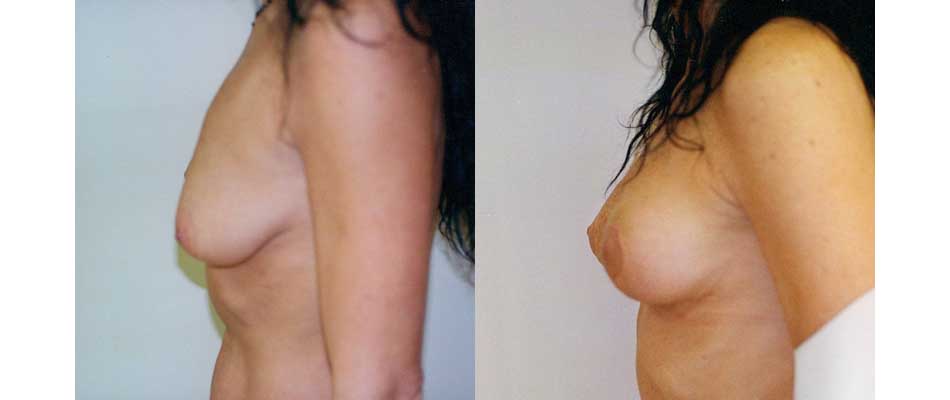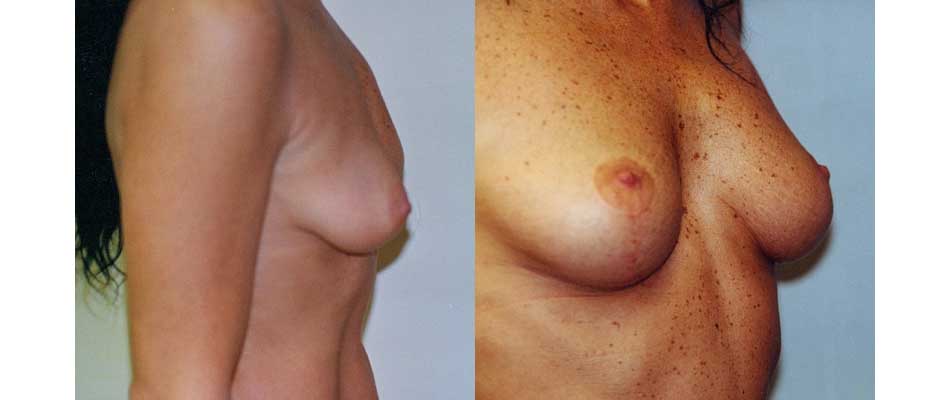Breast Lift
The shape and volume of a woman’s breasts can change over the years, altering how her clothes fit, causing neck and back pain, and sometimes affecting how she feels about herself. When breasts slowly droop over time, no diet or exercise plan can restore them.
In Barrington, many breast lift patients have seen their breasts change with the effects of gravity – losing shape and volume. Some women may experience neck or back pain.
If you’re uncomfortable with your breasts, a breast lift can give you renewed shape and symmetry for a firmer, younger look. And, for many women, a breast lift also boosts self-confidence.
What is a breast lift?
A breast lift is a surgical procedure to change the shape of the breasts, raising and firming them. It can also raise the nipples and reduce the size of the areolae to be proportional to the newly lifted breasts. The medical term for a breast lift is mastopexy.
Breast lift surgery will not significantly change cup size or fill in the upper portion of the breasts but can be combined with augmentation to make breasts look fuller.
A breast lift can counteract the loss of firmness and elasticity that occurs with age due to:
- Pregnancy, breastfeeding
- Gravity
- Weight fluctuations
- Aging
- Genetics
Who is a Good Candidate for a Breast Lift?
Many women consider breast lift for changes like:
- Breasts have sagged – have lost volume and shape, maybe have become longer or flatter
- Nipples have shifted – may fall below the crease, point downward
- Areolae have stretched – have stretched out of proportion to breasts
- Breasts are no longer symmetrical – one breast may have sagged lower than the other
If you’re planning to become pregnant or breastfeed in the future, you may want to consider waiting until afterward for a breast lift. Pregnancy may change the shape of your breasts and could change the results of a pre-pregnancy breast lift.
Preparing for a Breast Lift
At your initial consultation, your doctor will review your medical history, complete a physical exam, discuss your expectations, and go over the risks and benefits of surgery. Before having surgery, your doctor may ask you to:
- Schedule a baseline mammogram
- Stop smoking
- Maintain a healthy weight
- Stop taking certain medications temporarily
- Arrange for help at home during your recovery
The Breast Lift Procedure
Surgery can be done in an outpatient center or hospital under general anesthesia or sedation with local anesthesia. The procedure lasts approximately two to three hours. You should be able to go home the same day.
- Your doctor will make incisions, which may vary from case to case. They might be around the areolae, downward towards the crease, or horizontally across the crease.
- You may have stitches placed within your breast tissue to reshape it or reduce the areolae’s size.
- Then, your doctor will remove excess skin and reposition the nipples as needed.
- Your incisions will be closed with stitches, surgical tape, or adhesives.
- After surgery, your breast will be covered in gauze and a support bra. You may have small tubes in place to drain excess fluid from the incisions.
- When you are cleared to go home, you will need a driver because of the anesthesia. Before you leave, your doctor will give you post-procedure instructions. It is vital to your recovery that you follow these instructions carefully.
Recovery
You will likely need pain medication for the first few days. You should also avoid bending, lifting, or straining.
You will need to keep pressure off your breasts and sleep on your back or side.
If you have drainage tubes in place, they will be removed within a few days at a follow-up appointment. Your doctor will also change your dressings at that time and advise you when to return to have your stitches removed.
You should wear a support bra for several days, round the clock, and then for three to four weeks after surgery.
During recovery, you should carefully follow your doctor’s post-procedure instructions for faster healing and to achieve your best results.
Results
The change in the shape of your breasts will be noticeable immediately after surgery, but you won’t see your final shape for a few months while you heal. Because your breasts will be rounder and firmer after surgery, you may notice a change in your bra size.
The scars from the surgery will look lumpy and red at first. They will become softer, thinner, and lighter in color within a year or two. They are usually placed where your bra or bathing suit can hide them.
Although the surgery is meant to be long-term, you may notice some sagging as you age and your skin loses its elasticity. Maintaining a stable weight can help keep your results like-new longer.
Risks
As with any surgery, the risks of breast lift surgery include bleeding, infection, and reaction to the anesthesia. In addition, the risks of this particular surgery include:
- Scarring – Scars are usually hidden by bras or bathing suits. Scars typically fade in one to two years. On occasion, problems with the healing process can thicken the scars.
- Change in sensation – Sensation typically returns within several weeks, but some loss of feeling may be permanent.
- Asymmetry or irregularities in shape and size – Surgery can’t always correct existing asymmetry. Change may occur during the healing process, as well.
- Damage or tissue loss of nipples or areolae – Tissue damage can occur if blood flow to the nipple or areolae is disrupted during surgery.
- Challenges with breastfeeding – some women may not produce enough milk after surgery.
FAQs
Does a breast lift require implants?
No. But you can schedule an augmentation at the same time to increase your breast size.
If I already have breast implants, can I still get a breast lift?
Yes, you can. You can also choose to add implants if you’d like.
Can a breast lift help my back pain?
It may. A breast lift can redistribute the weight of your breasts, which may improve some back pain.
“Dr. Madry is an amazing Plastic Surgeon. I’ve had a tummy tuck and a breast uplift done by him and I couldn’t be happier!! His skills, his compassion and his bedside manner are the truly the best care I’ve ever had. ” – C.W.

